Column: I spent a week in Montana coal country. Here’s what surprised me
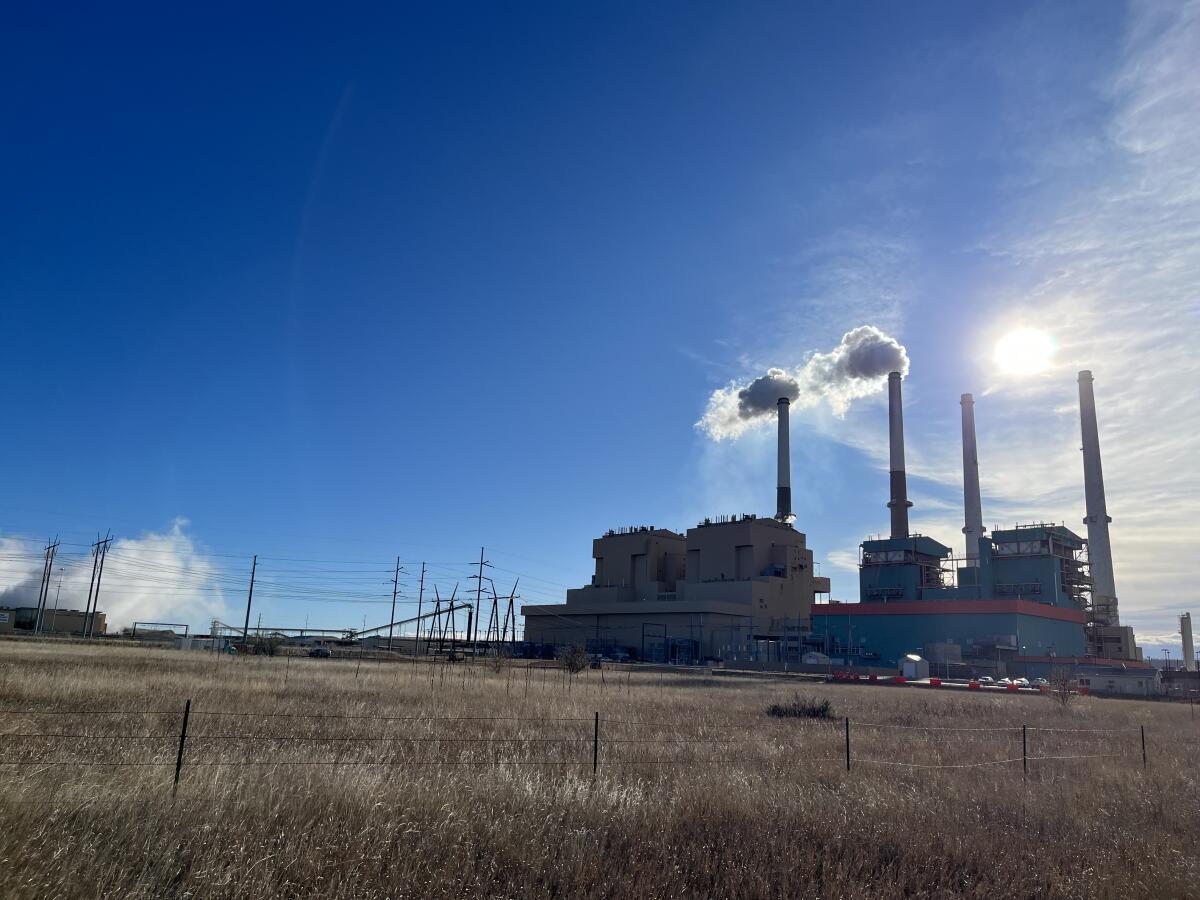
- Share via
There was a lump of coal waiting for me at the hotel in Montana.
Technically it was a stress ball, designed to resemble the fossil fuel that gives the rural town of Colstrip its name. I spent several days there last week, interviewing local residents and environmental activists locked in battle over the fate of a coal-fired power plant that has supplied electricity to millions of people on the faraway Oregon and Washington coasts for decades.
You're reading Boiling Point
Sammy Roth gets you up to speed on climate change, energy and the environment. Sign up to get it in your inbox twice a week.
You may occasionally receive promotional content from the Los Angeles Times.
The coal plant is without question a climate villain, spewing more heat-trapping pollution into the atmosphere last year than all but two other electricity generators in the American West, according to a federal database. The plant and neighboring mine are also the economic lifeblood of Colstrip, employing roughly 600 people in and around a city of just over 2,000 residents.
So I was bemused, but not surprised, when the clerk at the hotel’s front desk handed me the coal-shaped stress ball, courtesy of Jim Atchison, executive director of the Southeast Montana Economic Development Corp. He would be my local tour guide.
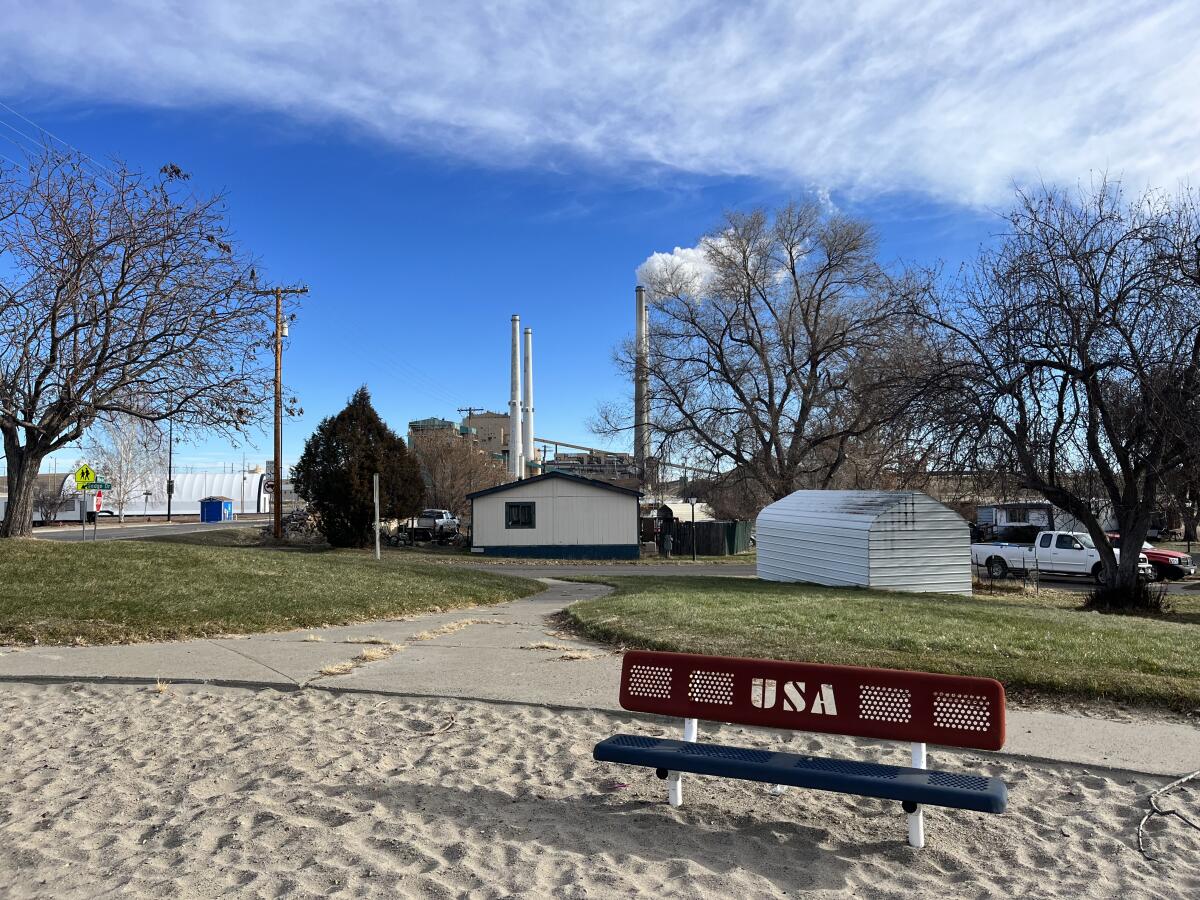
I was more surprised when the clerk told me she was a member of the Northern Cheyenne Tribe who was part of a successful campaign to keep oil in the ground beneath the tribe’s reservation. She’s now running for a seat on the Tribal Council.
Our conversation wouldn’t be the last time the people of Montana caught me off guard.
Several people I met in Colstrip either denied or downplayed the climate crisis. But despite my hailing from a big-city California newspaper, and my track record of criticizing fossil fuels, they couldn’t have been friendlier or more hospitable to me.
The proprietor of the golf course-adjacent restaurant shared his family’s history and brought out several 1970s-era copies of the high school yearbook, dubbed “Coaldust.” I bonded with one of the owners of the Subway sandwich shop over our shared love of Disneyland. The mayor got off his bike at the fitness center’s morning spin class to say hello ahead of our formal interview.

They all want to see the coal plant stay open, and understandably so. It’s given them an idyllic life, providing not only high-paying jobs but also abundant tax revenues that have funded gorgeous schools and other amenities, including 32 public parks.
None of that changes the terrifying realities of climate change.
Between stops in Montana, I caught up on the latest depressing headlines — November ranking as Earth’s sixth straight record hot month, the United States extracting more oil and gas than ever before in 2023, global climate pollution hitting a record high this year. I also read about a new study concluding that fine-particle pollution from coal plants killed 460,000 Americans between 1999 and 2020 — a conclusion that made me shudder as I stared up at the Colstrip plant’s towering 692-foot smokestacks.
We need to stop burning fossil fuels as fast as possible. But those of us who live on the West Coast — and have long depended on remote coal plants to power our cities — also need to remember that our choices affect people in places like Colstrip.
We need to remember that our wind farms — like the one that Washington state’s largest private utility company last week announced it would build in Montana to help replace the coal power it currently gets from Colstrip — don’t create nearly as many long-term jobs as the fossil fueled plants they’re replacing, even as they generate tax revenues and a construction boom.
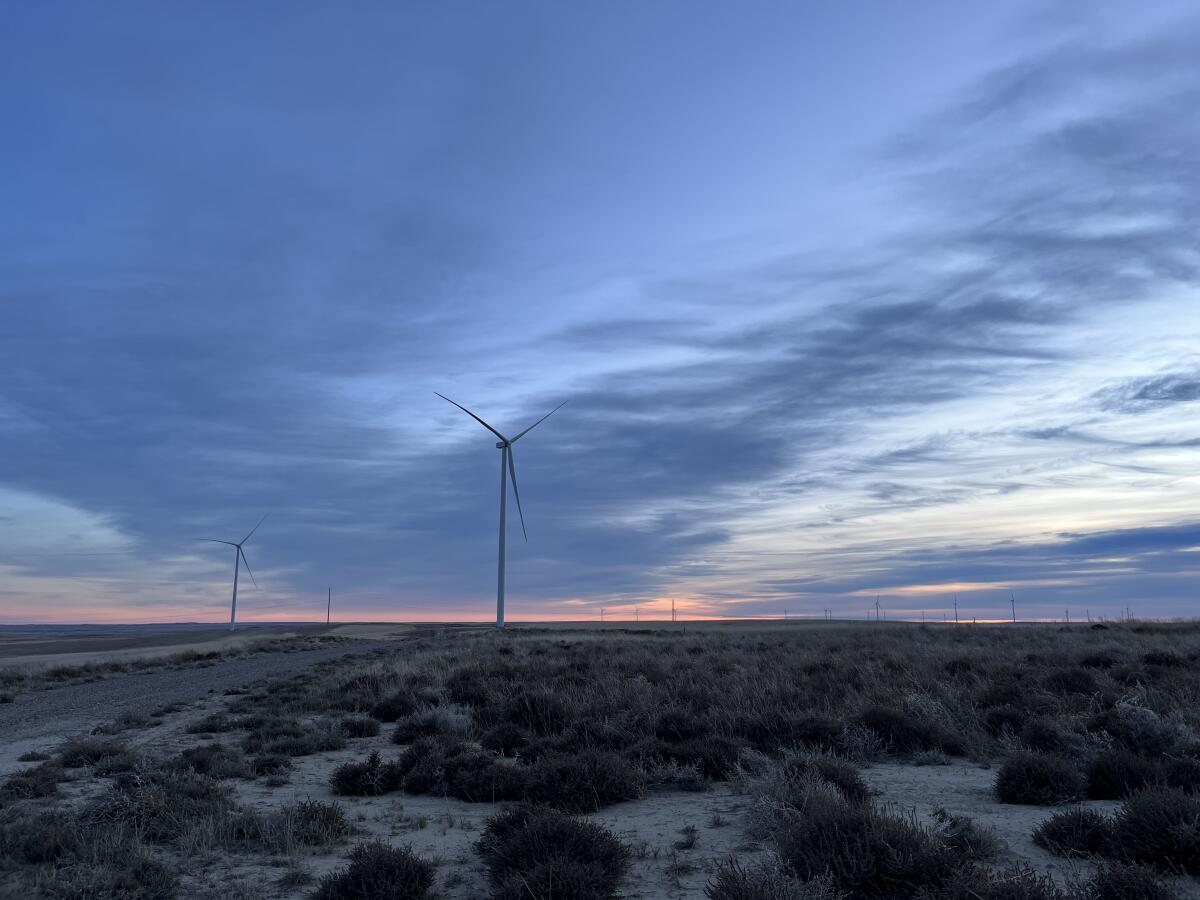
We need to recognize that as much as towns such as Colstrip have benefited from our coal consumption, not everyone at the far end of those power lines has been happy. I spent a morning last week with a rancher who is following in his father’s footsteps by fighting water pollution from the Colstrip plant — and with conservation activists who recently persuaded the Montana Supreme Court that state officials had ignored water quality laws when approving an expansion of the coal mine feeding the plant.
Perhaps more than anything, we coastal city dwellers must be willing to work with people with whom we disagree.
It may have felt good for Washington residents who buy electricity from Puget Sound Energy or Avista Corp. when those utilities announced they would transfer their ownership shares of the Colstrip plant to other companies — meaning the power flowing to Washington homes would be cleaner. But as long as those other companies keep running the Colstrip plant — which they intend to do — the planet will keep getting warmer, harming all of us. Climate pollution doesn’t recognize state borders.
Likewise, it’s easy for California progressives to wave a dismissive hand at Montana Gov. Greg Gianforte, who once assaulted a journalist while running for Congress and more recently has attempted to pause a court ruling requiring his appointees to take global warming into account when making big decisions. Critics say he’s made a mockery of the state’s constitutional right to a “clean and healthful environment” — a reminder of a not-too-distant past when Montana was politically purple.
But much as we might like to shrug our shoulders and write off Montana as irrelevant to our future, the Western electric grid is a massive interconnected machine that — like heat-trapping pollution — doesn’t recognize state borders.
I glimpsed that truth firsthand last week, at a lonely electrical substation 40 miles west of Helena, Montana’s capital.
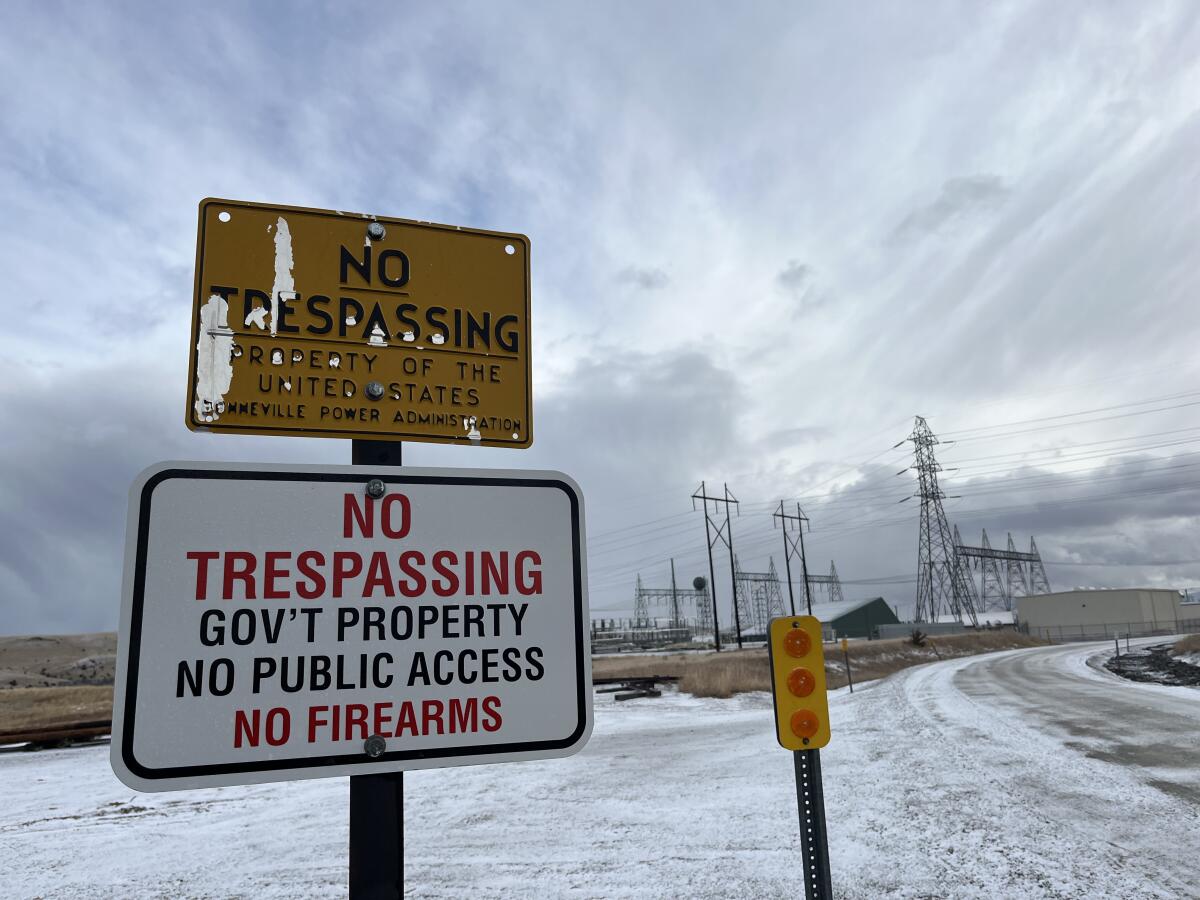
Surrounded by snow-capped mountain vistas, the substation’s eerily quiet poles and wires mark a crucial spot on the Western grid. Power lines approach from the east, carrying electricity from Colstrip — and from a sprawling wind farm that opened last year. All those electrons leave the substation going west, flowing through more power lines to the Portland and Seattle areas.
Our ability to ditch fossil fuels — and make a real dent in the climate crisis — will hinge on electric lines like these. It will hinge on big cities and rural towns striking deals to shut down coal plants, stop building gas plants and add a lot more wind and solar farms. It will hinge on red-state politicians accepting that fossil fuels are on their way out, and blue-state politicians looking beyond narrow in-state interests. It will hinge on more rooftop solar panels and energy conservation and public transit.
In other words, we’ll either live together or die alone.
That’s true globally, too. Negotiators are hurrying this week to hammer out an agreement at the international climate conference in Dubai — an agreement that won’t be nearly enough to end the climate crisis but will probably be better than nothing.
And it’s certainly true here in Los Angeles. Like the utilities serving the Oregon and Washington coasts, the L.A. Department of Water and Power operates a coal-fired power plant in the rural West, this one in Utah. The department is trying to convert that coal plant to burn a combination of natural gas and green hydrogen, and eventually 100% green hydrogen.
It’s an unproven gambit. I hope it works — just as I hope California’s neighbors to the north take seriously their responsibility to the people of Colstrip, who have kept their lights on for decades and deserve to benefit from the energy transition.
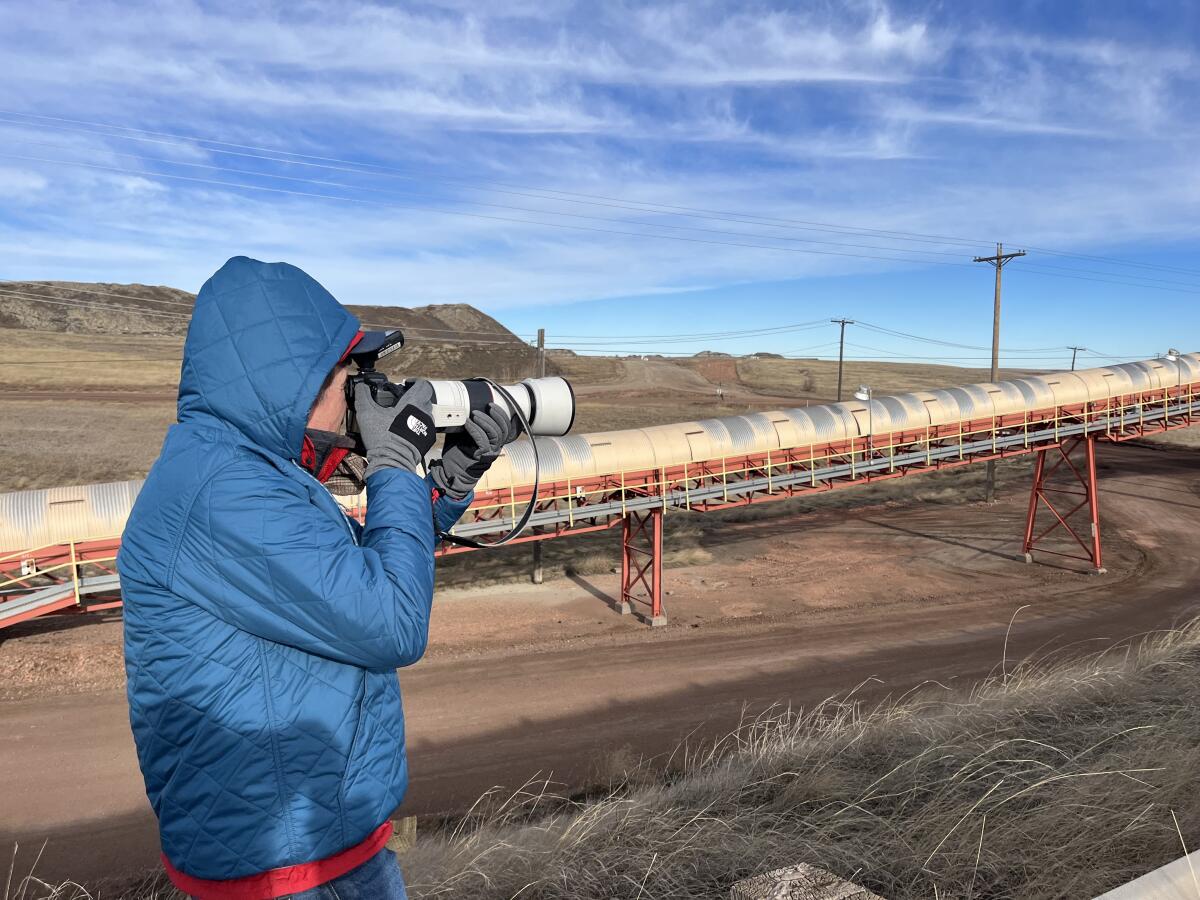
I’ll have a lot more to share about my week in Montana in Part 5 of Repowering the West, our ongoing series tracking the energy transition as it plays out across the region. That story will feature jaw-dropping photos from Robert Gauthier and incisive documentary video from Maggie Beidelman and Jessica Q. Chen, which have been hallmarks of our previous installments.
Until then, I’ll be thinking about the unexpected sights I saw in Big Sky Country. Like the sign on the wall of a Bozeman brewpub bragging about the solar panels on the roof. And the educational display at the Billings airport on the wildlife of the Yellowstone River region. And the statue at the state Capitol building honoring Jeannette Rankin, the first woman elected to Congress — and the only member of Congress to vote against American’s declaration of war on Japan after the Pearl Harbor attack.
I’ll also be thinking about coal. And heat waves, and droughts, and extreme storms, and rising seas.
If I get anxious, I’ll have a stress ball ready to go.
On that note, here’s what else is happening around the West:
TOP STORIES
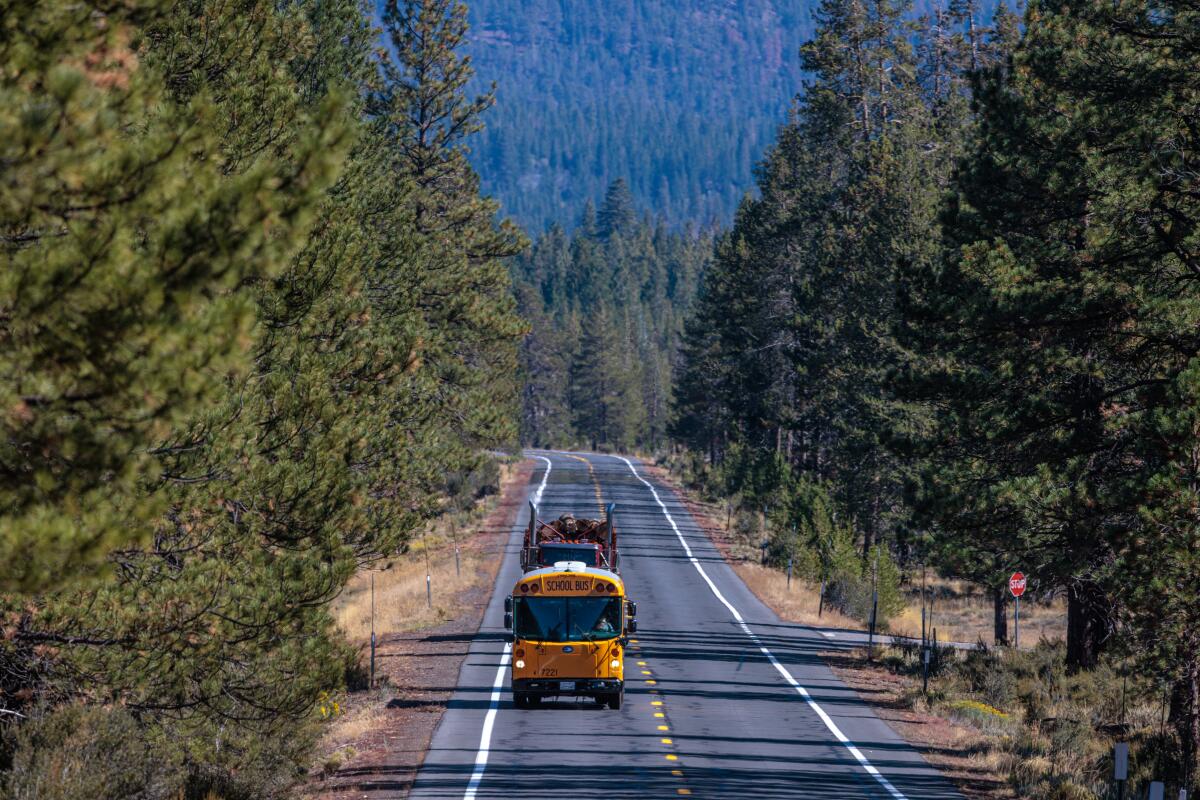
I’m sympathetic with rural California school districts that say it’s unrealistic to require them to switch to electric buses until more charging stations are built — a concern highlighted in this story by my L.A. Times colleague Hailey Branson-Potts. Still, California is giving those school districts another decade-plus to keep buying buses that run on gas, which should be plenty of time to solve the charging issue. It does need to be solved, though. Exhibit A: In the two years since Congress approved $7.5 billion for electric vehicle chargers, zero charging stations have been built using that money, Politico’s James Bikales reports. And in another challenge for clean cars, West Virginia Sen. Joe Manchin’s push to end China’s domination of the battery industry could lead to relatively few electric vehicles being eligible for new federal tax credits, Canary Media’s Jeff St. John writes.
In a major development for California’s never-ending water wars, Gov. Gavin Newsom’s administration released a final environmental review of the controversial Delta tunnel project. If you don’t know what the Delta tunnel is — or if you’re all too familiar and feel like raging against people who disagree with you — my colleague Ian James has the details. Ian also reports that California officials are telling cities and farmers to plan for only 10% of their total allocations from the State Water Project in the coming year, although there’s still plenty of time for a wet winter to raise that number. If you’ve got a home garden and want to help save water, The Times’ Jeanette Marantos writes that California native plants aren’t your only drought-tolerant option.
“The ground beneath your feet has a soul. It’s your kin. It doesn’t belong to you as an individual, but you belong to it.” So writes my colleague Tyrone Beason, in a beautiful story about land in Southern California’s Orange County being returned to two Indigenous tribes, whose goals include restoring local ecosystems and buffering the coastal area against sea level rise. President Biden, meanwhile, pledged to give Native American tribes more say over management of public lands — a pledge that could lead to new and larger national monuments in Southern California, my colleague Lila Seidman writes. I also enjoyed this Q&A with the first Indigenous director of the National Park Service, Charles Sams, about the Biden administration’s plan to tell a more complete history at U.S. national parks by partnering with Native Americans (Q&A conducted by HuffPost’s Jennifer Bendery).
After a relatively mild fire year — thank goodness gracious — Southern California firefighting crews are looking ahead to 2024. They’ve spent recent months conducting “prescribed burns” to limit the odds of future conflagrations getting out of control, and preparing for the decent chance that 2024 will be another disaster year made worse by climate change, as The Times’ Hayley Smith reports. Up in Oregon, meanwhile, Warren Buffett’s PacifiCorp electric company has agreed to a $299-million settlement to pay for damages from a 2020 wildfire, Oregon Public Broadcasting’s Ryan Haas reports — a reminder that it’s increasingly not just California electric utilities such as Pacific Gas & Electric scrambling to stop their wires from igniting destructive blazes.
THE ENERGY TRANSITION
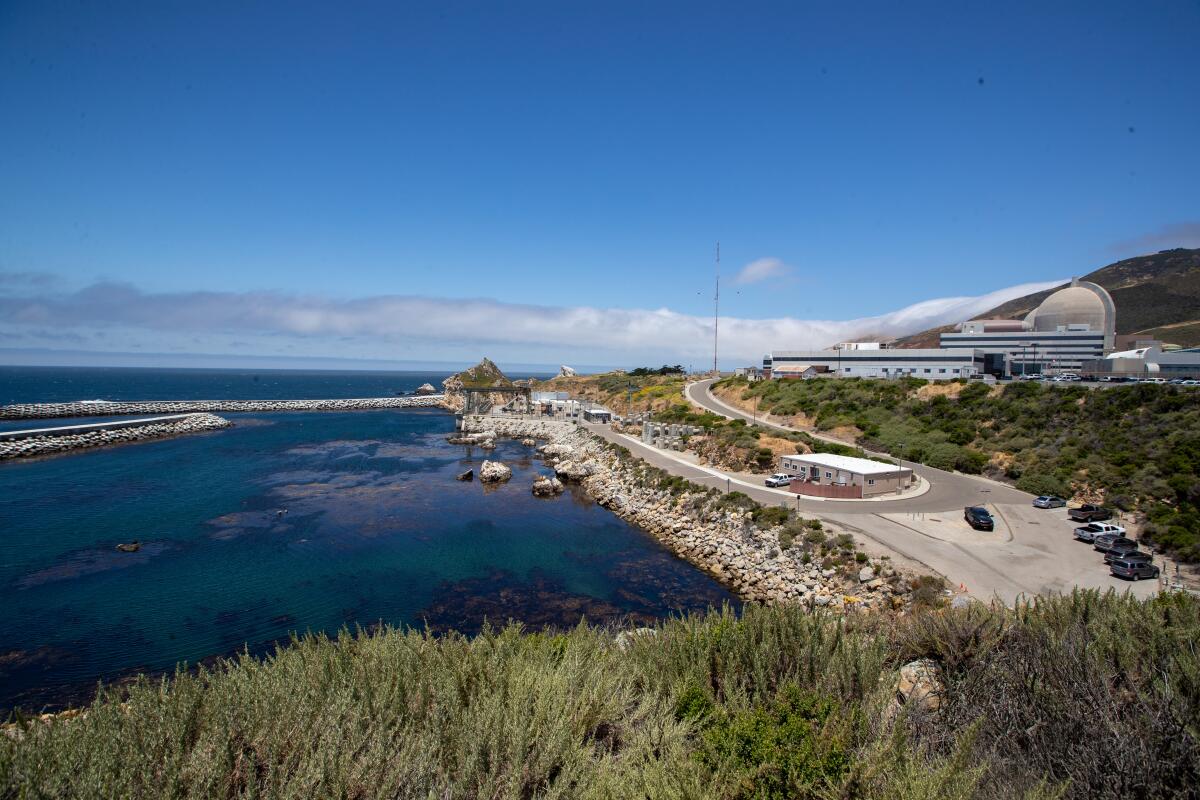
The California Public Utilities Commission is scheduled to vote this Thursday on whether to let the Diablo Canyon nuclear plant stay open through 2030, instead of closing in 2025. Details here from the San Diego Union-Tribune’s Rob Nikolewski. The outcome feels like a foregone conclusion — Gov. Gavin Newsom has done a remarkable job lining up political support to keep the nuclear reactors humming — but having once written that the plant “will almost certainly go offline” come 2025, I’ve learned not to rule anything out. In a reminder of why so many people continue to oppose nuclear energy, my colleague Stephanie Yang has a story on the public pushback facing Japan’s leaders as they make the case that cutting climate pollution will require the country to restart all its remaining nuclear reactors — a dozen years after the Fukushima disaster led to their shuttering.
“All the people are on the same side now: the pagans, the Christians, the Democrats, the Trumpsters.” The San Francisco Chronicle’s Kurtis Alexander has a fascinating story on the proposed Northern California wind farm that has brought together a Native American tribe and far-right politicians in a battle to stop the 48 turbines from ever being built. In better news for clean energy, the United States’ first commercial-scale offshore wind farm, off the coast of New York’s Long Island, is now generating electricity, per Jennifer McDermott at the Associated Press. Golden State officials, meanwhile, don’t seem too worried that a few East Coast offshore wind farms have been canceled recently, as Rob Nikolewski reports for the San Diego Union-Tribune.
In a potentially significant breakthrough for 24/7 renewable energy, America’s first “enhanced” geothermal plant is now operational in Nevada. Canary Media’s Maria Gallucci has the story, writing that the Google-backed power plant from developer Fervo Energy could show it’s possible to get round-the-clock electricity from underground heat pockets in a lot more places than current technology allows. Having first written about Fervo four years ago, I’m excited to see what happens next. In other news for outside-the-box clean energy solutions, a new California law requires state agencies to study the potential to generate power from ocean waves and tides — and some experts say the potential is huge, CalMatters’ Julie Cart writes.
After slashing rooftop solar incentives in a way they insisted would prompt more people to install batteries, California officials have switched things up again, approving new changes backed by big utility companies that the solar industry says will undermine batteries, too. It’s only the latest move by Gov. Gavin Newsom’s appointees to undercut rooftop solar, as Canary Media’s Jeff St. John explains. (See also my column from last month.) In better news for rooftop solar, St. John also wrote about how an app powered by artificial intelligence is speeding up notoriously slow permit approvals in the Golden State.
POLITICAL CLIMATE
California officials are on the verge of requiring homes with broken air conditioners to replace them with electric heat pumps that can do cooling and heating — or at least with more efficient A/C units. The proposed rule — explained here by the Sacramento Bee’s Ari Plachta — is one of several efforts to transition the state away from gas space heaters, water heaters and stoves. The Public Utilities Commission could vote this Thursday to end subsidies for electric lines to new homes and other buildings if those buildings also use gas, as Politico’s Wes Venteicher and Blanca Begert report. And lest we forget that gas not only heats the planet but can also pollute the air we breathe, researchers are finally studying the public health consequences of Southern California’s Aliso Canyon gas leak, eight years after it happened, per Olga Grigoryants at the L.A. Daily News.
The Biden administration is willing to help build enough clean energy to replace four controversial hydropower dams on the Snake River in the Pacific Northwest, a leaked document shows — but that doesn’t necessarily mean they’re coming down. The Associated Press’ Hallie Golden and Rebecca Boone have the latest on the Snake River dams, the fight over which has scrambled traditional political alliances and sparked fierce debate over the role of hydroelectricity in confronting climate change. For more on that debate, see my story from September on Idaho Power’s hydro-fueled plans for 100% clean energy.
The federal government has made its first major investment in restoring Southern California’s ailing Salton Sea — and it only took 20 years. The Desert Sun’s Erin Rode reported on plans for the $72 million in federal money, which will hopefully help slow the decline of a lake that is shrinking as Imperial Valley farmers use less and less Colorado River water to irrigate their fields, leading to less runoff into the lake. Speaking of which, the Desert Sun’s Janet Wilson reports that the Biden administration will pay those farmers $77.6 million to cut back an additional 100,000 acre-feet on their Colorado River water consumption — with more money to come. That should help boost water levels at Lake Mead but could lead to the Salton Sea shrinking even faster.
People with ties to the oil and gas industry are launching a new California ad blitz, designed to persuade voters that the state’s climate policies are to blame for rising electricity and gasoline prices. Anne C. Mulkern wrote about the campaign for E&E News, noting that it comes ahead of the 2024 election and includes TV and Facebook ads in English and Spanish. In another important story, Drilled’s Amy Westervelt and DeSmog’s Matthew Green wrote about prestigious news organizations such as the New York Times and the Washington Post publishing valuable climate change stories alongside fossil fuel industry propaganda — and sometimes hosting oil and gas propaganda events. Meanwhile, there’s a record number of fossil fuel representatives at the ongoing global climate conference in Dubai — nearly 2,500 of them, Heated’s Arielle Samuelson writes.
HOW WE GET AROUND
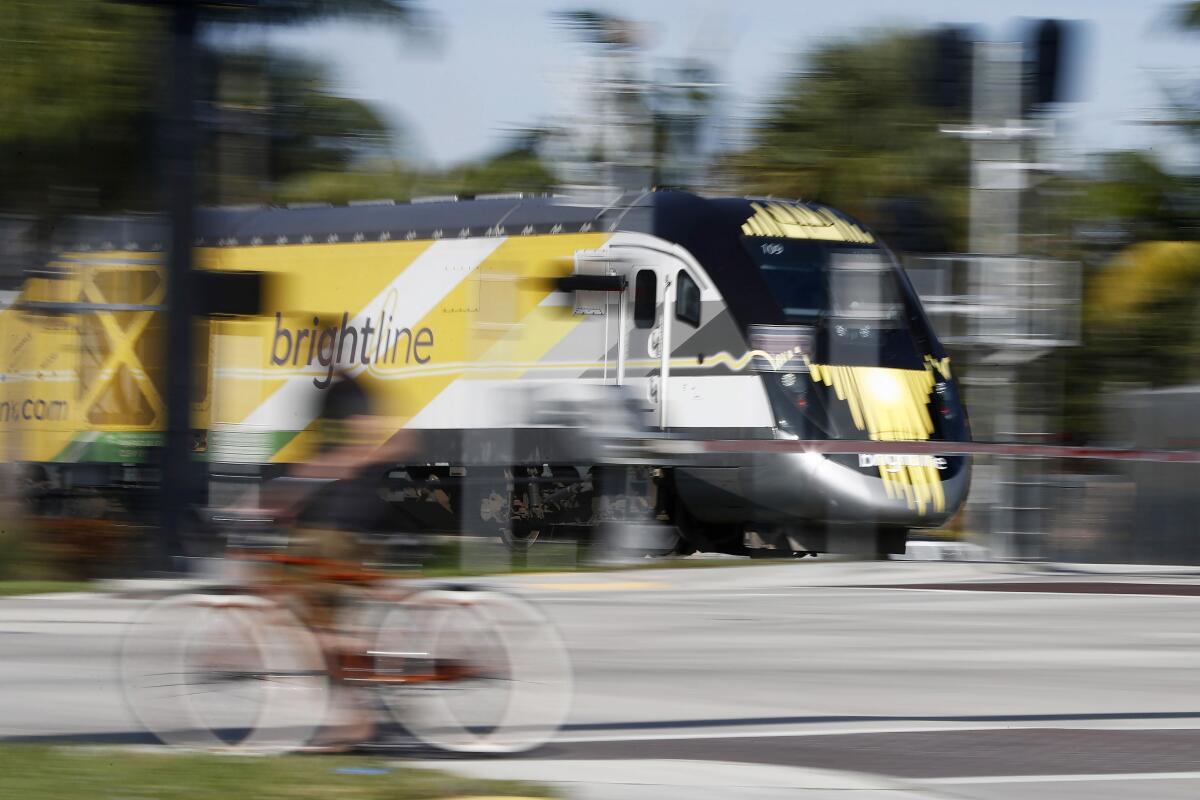
A planned high-speed train from Southern California’s Inland Empire to Las Vegas won a $3-billion grant from the Biden administration, hopefully heralding an era when it’s a lot easier to travel without a car. California’s high-speed rail project between Los Angeles and the Bay Area also landed $3.1 billion in federal funding, The Times’ Rachel Uranga reports. In similarly hopeful news for getting around L.A. via public transit, there are a whole bunch of affordable apartments — and a public park — coming to North Hollywood’s Metro station: my colleague Caroline Petrow-Cohen reports. Speaking of which, Caroline is one of several L.A. Times reporting fellows who contributed to this fascinating collection of interviews with locals who ride public transit on the regular, asking them why they take transit, what it’s like on the trains and what Metro leadership could do better.
The California Department of Transportation ignored the fact that a planned Highway 99 expansion in the San Joaquin Valley would support construction of an industrial park, leading to even worse air quality in low-income communities of color. That’s the conclusion of this investigation from Fresnoland’s Gregory Weaver, which takes Caltrans to task for what critics say is the agency’s failure to move away from the era of highway building — an era that just brought new express lanes on the 405 Freeway in Orange County, as my colleagues Grace Toohey and Rachel Uranga report, despite a bunch of research showing that adding more lanes to a freeway only induces more traffic — and thus more climate emissions and air pollution.
As if the stuff we knew about gasoline cars wasn’t bad enough already, here’s another data point: Traffic exhaust fumes can raise blood pressure, worsening the risk of heart attacks and strokes. That’s according to a new study from University of Washington researchers, as reported here by the Seattle Times’ David Kroman. It also continues to be true that bigger cars are worse for people and the planet than smaller ones. Politico’s Wes Venteicher and Blanca Begert wrote about a new report from UC Davis researchers calculating that global climate pollution from the auto industry could have fallen by more than 30% over the last decade if only we’d kept driving cars the same size as we did in 2010. Instead, we started driving bigger cars.
A Los Angeles nonprofit just acquired a former urban oil drilling site for nearly $10 million, with plans to build affordable housing, a park and a community center. If that sounds like unqualified good news — well, as best I can tell, it is. My colleague Dorany Pineda has the story, writing that the land sale “marks a new chapter in a persistent and community-led fight against the oil drilling site, which residents argued for years was noisy and spewed foul odors.” In less positive news for cleaning up the air in Southern California cities — sorry! — The Times’ Samantha Masunaga and Seam Dean wrote about a leaked document that sheds light on Amazon’s efforts to avoid environmental restrictions on its Inland Empire warehouses, which fuel lots of pollution.
ONE MORE THING
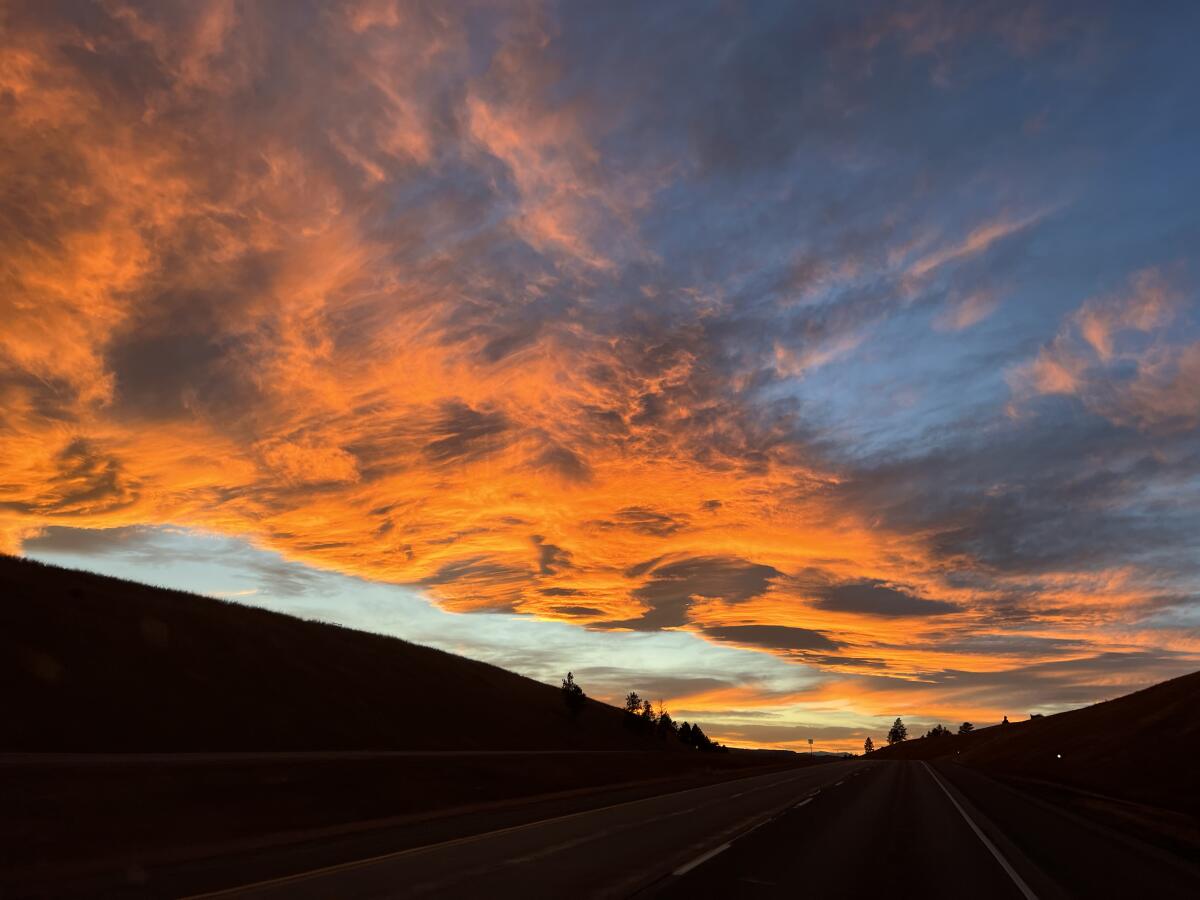
As I said earlier, I’ll be working on Part 5 of Repowering the West — focused on coal power — over the next few months.
I’ll have a few stories with additional bits and pieces from our Montana trip before then. To stay satiated in the meantime, check out my thread on X — formerly Twitter — featuring dozens of behind-the-scenes photos and observations from the road.
This column is the latest edition of Boiling Point, an email newsletter about climate change and the environment in California and the American West. You can sign up for Boiling Point here. And for more climate and environment news, follow @Sammy_Roth on X.
Toward a more sustainable California
Get Boiling Point, our newsletter exploring climate change, energy and the environment, and become part of the conversation — and the solution.
You may occasionally receive promotional content from the Los Angeles Times.




